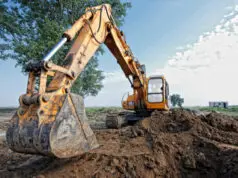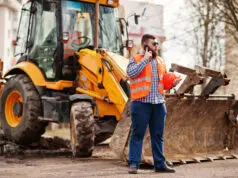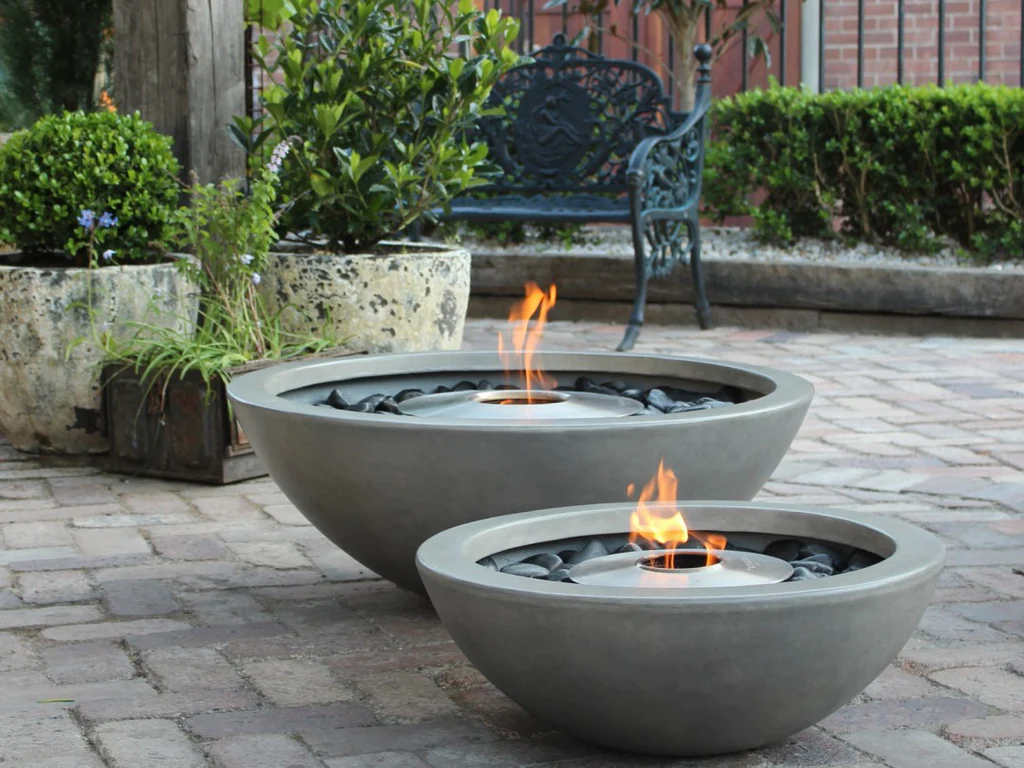
Ethanol fire pits are a great way to create a beautiful, glowing focal point in any outdoor space. Whether you are using an outdoor ethanol fire pit as an accent for your patio or you’re looking for an on-the-go option for beach or camping trips, these easy, efficient options come with some important safety considerations.
The following tips will help ensure that your next outdoor adventure is a safe and enjoyable one.
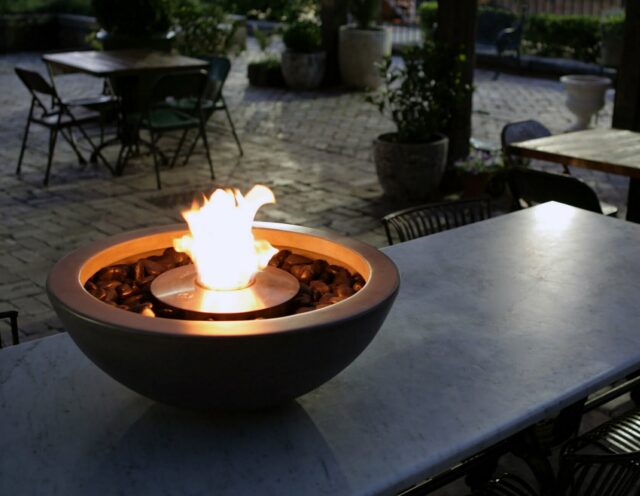
1. Understanding Ethanol Fire Pits: How They Work and Their Risks
Ethanol fire pits are fueled by “denatured ethanol,” meaning it contains chemicals that make it legally undrinkable and much safer to use than regular fuel. Denatured ethanol is an excellent clean fuel option; however, due to its high flammability, it still carries certain risks and precautions must be taken when using one.
Unlike a traditional woodburning pit, which draws in oxygen from the air around them, an ethanol fire pit must be equipped with vents designed specifically for ventilating the flame while burning denatured ethanol fuel instead of traditional wood logs.
Vents ensure that combustible fumes from the burning denatured Ethanol won’t linger in the air because they will escape out of these vents rather than filling your outdoor living space with smoke and sooty emissions. These vents help create a controlled flame size, so there is less risk of sudden flare-ups that could result in injury or property damage if not addressed quickly.
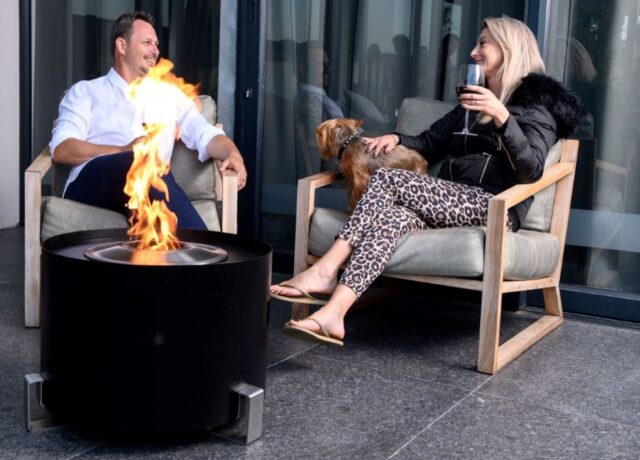
2. Choosing a Safe Location
When deciding where to place your ethanol fire pit, it’s important to consider its proximity to other flammable items and structures. While ethanol pits are safe when used responsibly, they can become dangerous if combustible materials are too close or faulty equipment is used.
For example, never place an ethanol fire pit on or near wooden decks or porches. It is also recommended that you place an ethanol firepit no less than five feet away from house walls and at least 15 feet away from shrubs, trees, and other combustible materials.
Additionally, you should always make sure that the area around your pit has adequate ventilation for fumes created by burning fuel and for the heat produced by the fire.
To ensure extra safety measures when using your polyester fuel-powered appliance are followed always have a charged water hose or bucket of sand nearby in case of emergency.
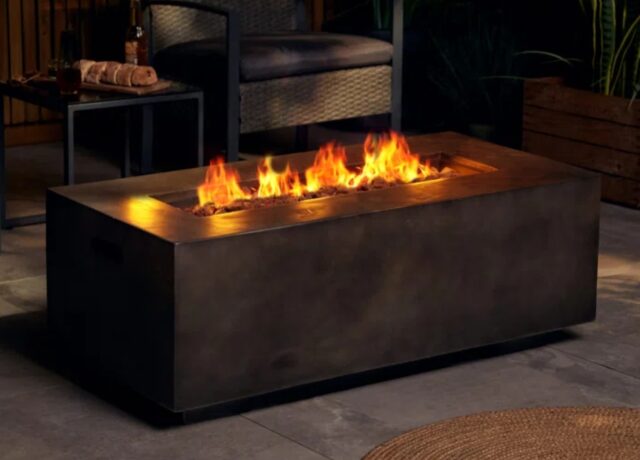
3. Safe Installation
The installation and setup of your ethanol fire pit is a critical step in safely enjoying the luminous flame of your outdoor feature. Here’s what you need to know before you get started:
- Choose a flat, level surface for your pit, away from any combustible materials such as lawn furniture, walls, trees, and other vegetation.
- Make sure that the basin has enough space around it to ensure ample airflow.
- Ensure that the area is well-ventilated; this will prevent dangerous emissions from building up in the area and allow for maximum fire safety.
If intended for permanent installation outdoors, make sure to use an appropriate non-combustible base material such as stone, concrete, or tile at least 0.5 inches thick to insulate it from potentially flammable surfaces below or nearby such as decks or grassy areas. Concrete may carry additional weight due its heavier composition so consult with an expert if unsure how much weight your desired location can sustain before deciding on placement materials and location dimensions accordingly.
Finally, ensure fuel supply lines are not subject to mechanical stress as these can cause accidental separation during use which can lead directly result in a massive flare-up that could endanger nearby people or property; secure fuel lines according to manufacturer recommendations when assembling components both prior to and after any period where the fire element is not in use.
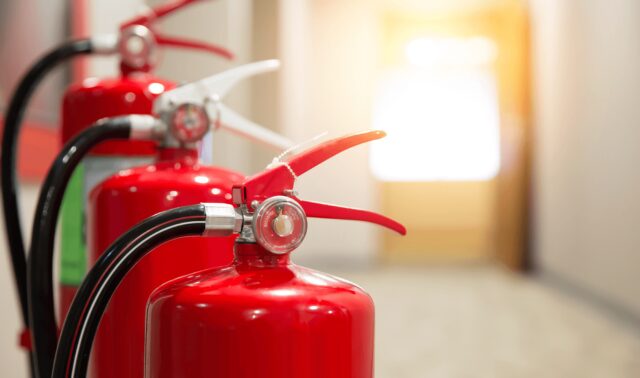
4. Essential Safety Accessories
When using an ethanol fire pit, it’s important to take the necessary safety precautions. To minimize any potential risks, be sure to utilize a variety of safety accessories. Most ethanol fire pits come with the following pieces of equipment:
- A Fire Extinguisher
An extinguisher should always be close at hand when using an ethanol fire pit. It’s essential for extinguishing small fires and preventing them from becoming dangerous blazes.
They are designed to smother a flame and trap heat inside. They can be used to cover an out-of-control blaze or instantly douse it with a thick layer of material that won’t burn away or leave embers in its wake.
- Safety Goggles
Wearing safety goggles during use is essential for keeping fumes out of your eyes and sparks away from your face. Choose quality materials that won’t fog up due to humidity changes and will adequately protect your eyes while still giving you visibility in darker rooms or outdoors at night.
- Gloves & Long Sleeves
Choose gloves that are heat resistant as well as flame retardant for maximum protection against burning embers or stray sparks kindling on clothing material. Wear long sleeves that fit snugly around the wrist but don’t come in contact with any hot surfaces near the flame while tending to the fire pit.

5. Maintenance and Cleaning Guidelines
Remember that ethanol fire pits need air circulation to burn correctly. This can be accomplished with the use of a fan or other ventilation system. Additionally, never leave your ethanol fire pit unattended.
It is essential to inspect the pipes and wicks of your ethanol fire pit regularly to make sure they are not blocked by dirt or debris which can reduce the efficiency of the pit.
Additionally, always keep appropriate extinguishers in close proximity to the fire pit when in use in case of emergencies.
In order to avoid unpleasant pungent odors due to old fuel accumulated in pipes, it is important that you replace fuel resources when necessary as well as always clean out any remaining fuel residue after every use with a paper towel using minimal quantities of warm water and soap. Make sure all wick material has been removed for safety reasons before replacing materials for new fires or refills.
Finally, never forget that fewer pollutants are better for everyone’s health; therefore ensure that only the recommended type and quantity of combustible fuels (ethanol) is used for safety reasons as well as consideration for our environment.
Conclusion
The most important tip is to always be aware of your fire’s behavior and adjust it as needed to prevent major flare-ups. Additionally, keep away from flammable materials, use only distilled ethanol or certified bioethanol fuel, and always securely extinguish the flame when you’re done.
That way, you can enjoy your ethanol fire pit with peace of mind knowing that everyone will be safe.



